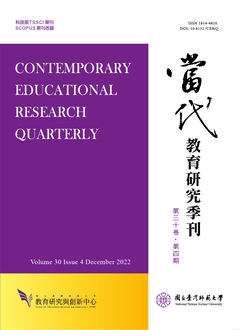

國立金門大學學生約80%來自臺灣各縣市,學生組成型態是一種地域之熔爐,且在金門無其他大學可資交流,學生活動範圍多受限於島內,是極適於研究社群網絡之獨立群體。本研究針對國立金門大學土木與工程管理學系四個年級共四班179位同學進行生活與學習網絡之問卷調查,利用網絡分析技術,探討同學社群網絡成形之原因,以及網絡特性與學生成績及行為之關係。研究發現學生生活網絡未隨著年級而鬆散,但次團體數卻減少,可能因高年級學生獨立性已提高。又因學生投入學習時間較少、多數同學習慣獨自讀書、系上亦未鼓勵集體學習等因素,導致學習網絡較生活網路疏離而出現碎裂現象。生活次團體形成之主因則在於同宿,尤其大一同宿經常決定未來三年學生之社群網絡,另社團與性別也是組成次團體的重要因素,次團體在學業成績與出席率相較於全班同學具有較高之一致性,顯示同儕之影響不可忽視。本文為國內首次利用網絡理論探討學生網絡特性與意涵,研究結果可應用於學生輔導之規劃與教學之改善等工作。
The features of the geological background of the National Quemoy University students, 80% of them from Taiwan, create morphology similar to that of a melting pot. Since NQU students have fewer chances to interact with university students in Taiwan, their social life can only be confined on Kinmen, and therefore, they form an ideal isolated population for social network study. This research explores the relationship between the academic performances and the social behaviors as well as the social and learning networks of 179 students of the Department of Civil and Engineering Management at NQU. What is found is that their social interaction is as frequent as before, but the number of social subgroups decreases for senior classes. On the other hand, learning networks, in contrast with the social networks, tend to be more fragmentary. The main causes may be threefold: (1) senior students spend less time studying, (2) many students prefer to study by their own, (3) the department does not provide courses that encourage group learning. This research depicts that living together during freshman year can be the most decisive factor, followed by club participating and gender identification, in shaping students' social lives within the next 3 years. In comparison with the entire class, students of a subgroup have more consistent academic performances and higher attendance rates. This confirms the positive peer influence exerted by the subgroup. This research is a pilot study which applies network theorems to analyze student social networks, and the result can be used to devise student counseling and to improve the quality of teaching.

本著作係採用創用 CC 姓名標示-非商業性 3.0 台灣 授權條款授權.
本刊國立台灣師範大學教育研究與創新中心
106台北市和平東路一段162號 | 電話: 02-7749-3670 | E-mail: cerecerq@gmail.com
教創中心 | 師大 | 電子報 | 線上投審系統
本刊由國家科學及技術委員會人文社會科學研究中心補助經費
© 2014 CERI-NTNU
